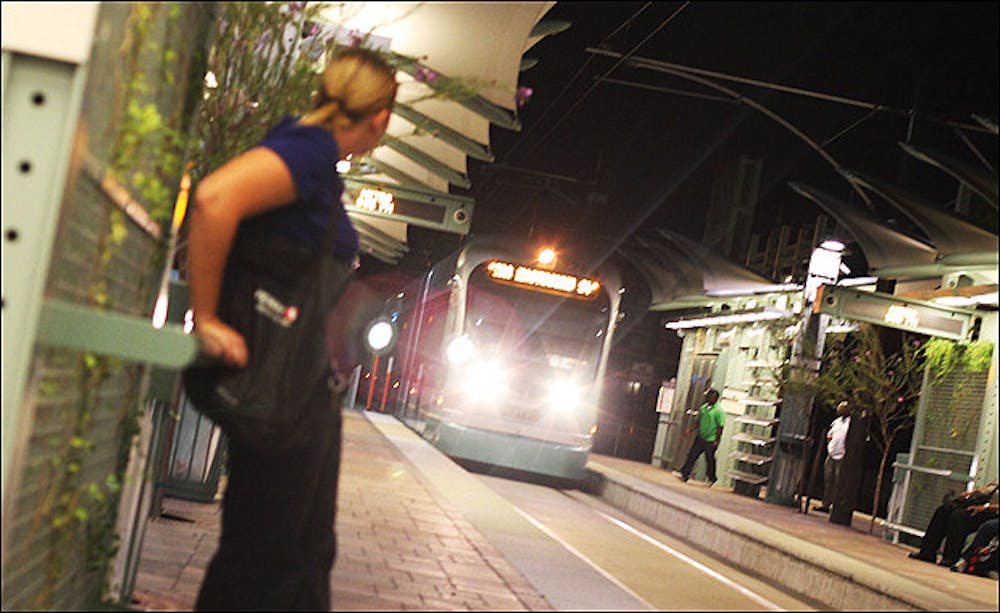Metro light rail budget issues have led officials to consider ways to save money, such as reducing train frequency or hours of operations, spokeswoman Hillary Foose said.
Metro spent $368,000 more than expected in its first six months on propulsion power, which includes air conditioning, Foose said, but the budget is still within a manageable range.
“[We] have contingency in the budget, so we are not significantly over,” Foose said. “We are only over budget for the first six months of [20]09, and only by less than 1 percent.”
The money budgeted for areas like labor, maintenance, utilities and customer service was not used up, Foose said, so money left over in those areas can cover the shortfall in others.
Officials are currently analyzing how to reduce the frequency of the trains without immediately affecting the ridership of the light rail, she said.
Metro is also considering how much money could be saved if the train’s frequency was increased but its overall hours were decreased.
However, Foose said she hopes Metro will not have to resort to those measures.
Junior urban and metropolitan studies major Jacob Yanachek said he thinks there are better ways to save money than cutting operating hours.
“I don’t think running [the light rail] more frequently is necessary, I think they should just run it longer [hours].” Yanachek said. “They could have more officers come on to check ticketing [more frequently].”
Nursing freshman Ashley Gonzales said that the light rail could have lowered the number of air conditioning units in one given train to help balance the budget.
Metro raised fares in July to help cover the overspending, and officials hope to avoid increasing the temperature on the trains by making other changes to the administrative side of business first.
“Now we have some experience in operation,” Foose said.
This experience has caused Metro officials to realize what areas can be cut and what areas need more money, she said.
During the past eight months of operation, Metro officials have gained a better estimate of what their overall target should be for coming months, she said.
“Our goal is … to have it be adjustments that won’t have immediate impacts directly to the customer,” Foose said. “We’re looking at ways to always become more reliable, to make sure that we are operating on the schedule that we have committed to, and looking at ways to make sure our passengers have a safe, clean environment.”
Yanachek said he would continue to ride the Metro even if the trains’ temperatures were raised.
“I have to ride [the light rail],” Yanachek said. “That is my only mode of transportation.”
Metro officials are continually trying to improve the operation of the light rail, which is expected to be completed by 2030.
Foose said the project was supposed to be completed about a year earlier, but due to a shortfall in revenue, all the prospective dates have been pushed back a few years.
“These projects take a long time, as they should,” Foose said.
Reach the reporter at katelyn.bolnick@asu.edu.




